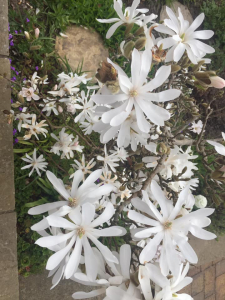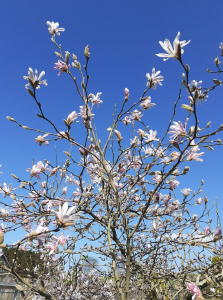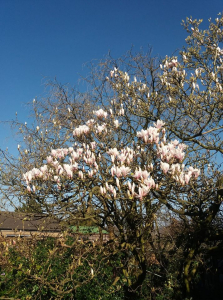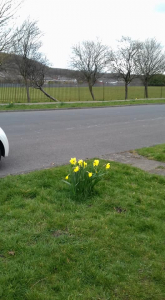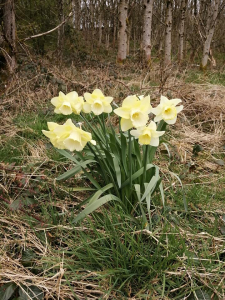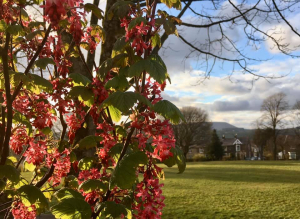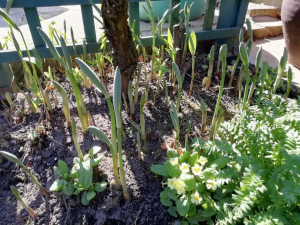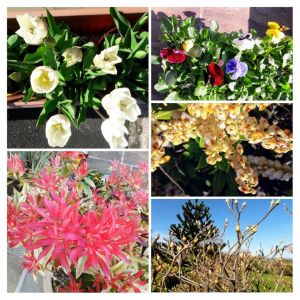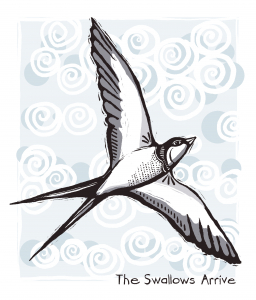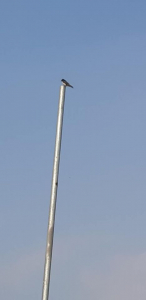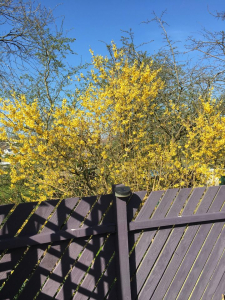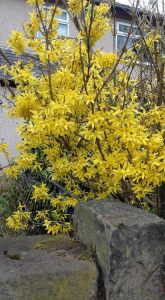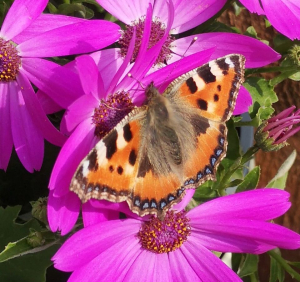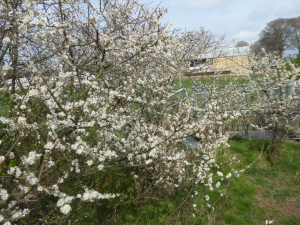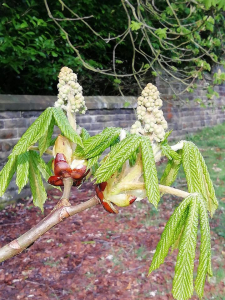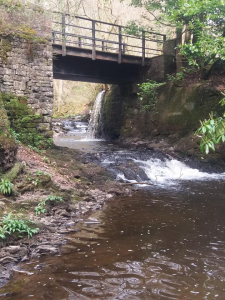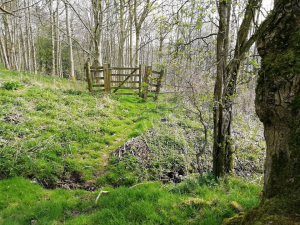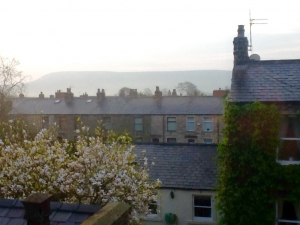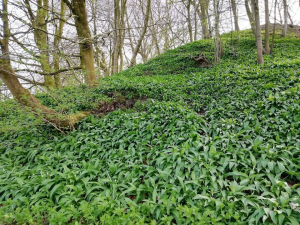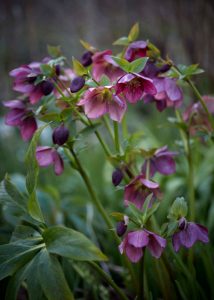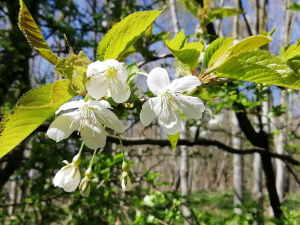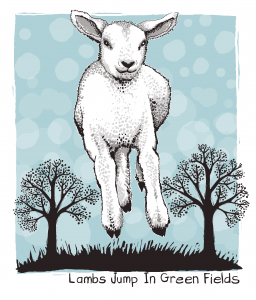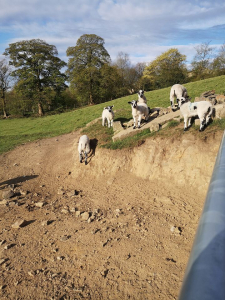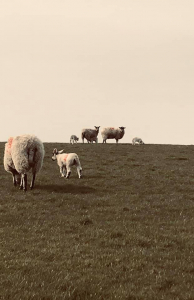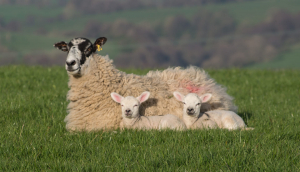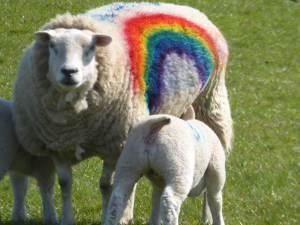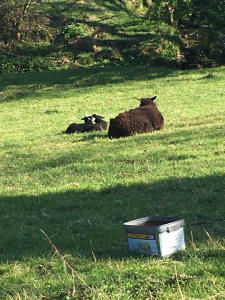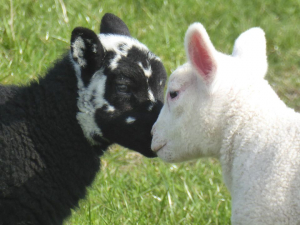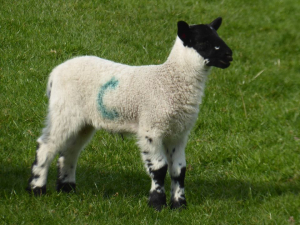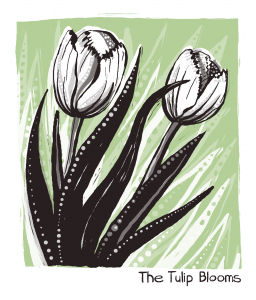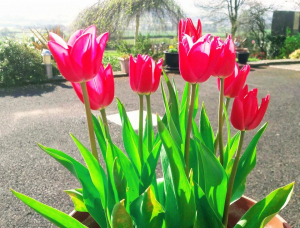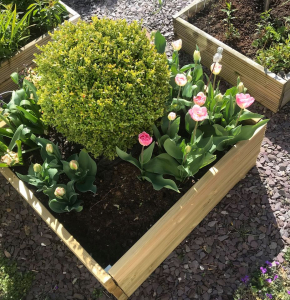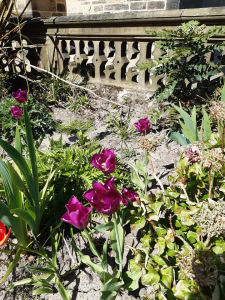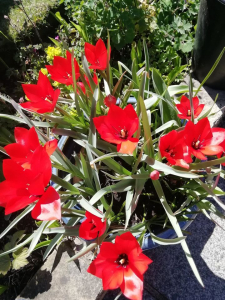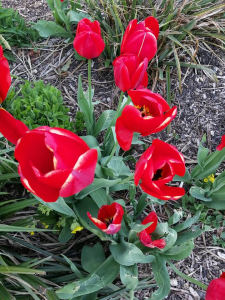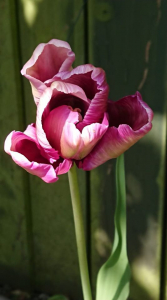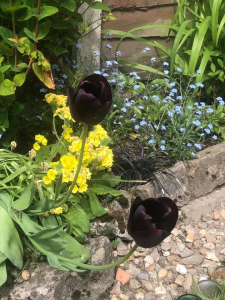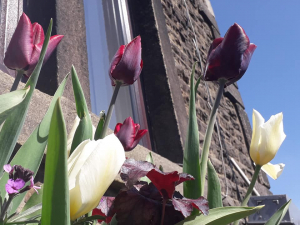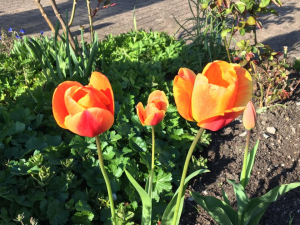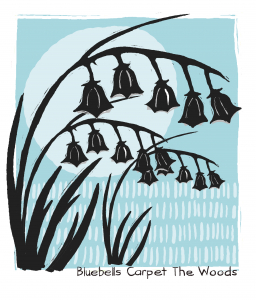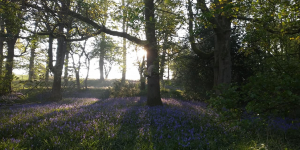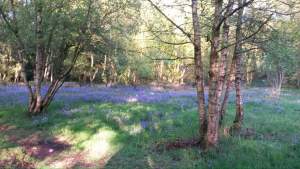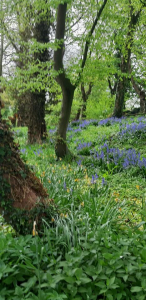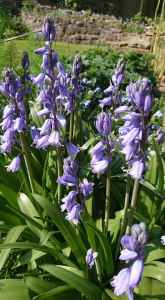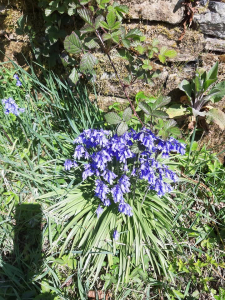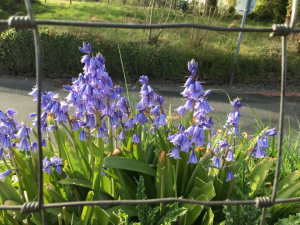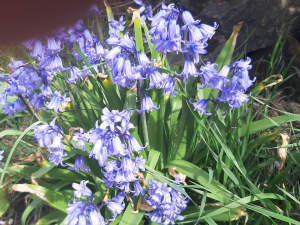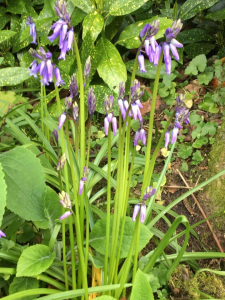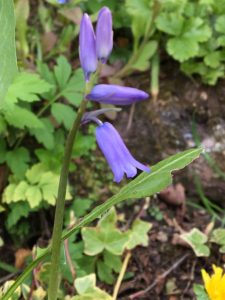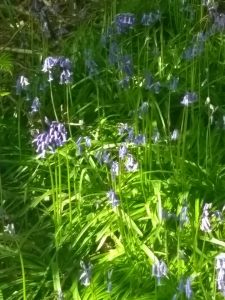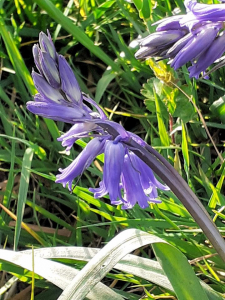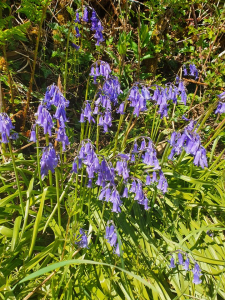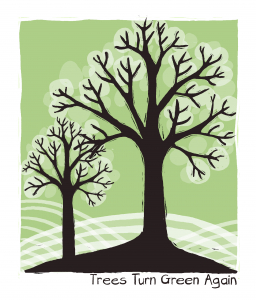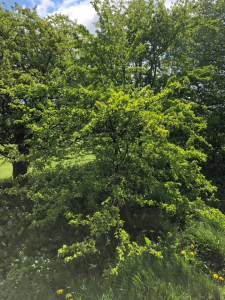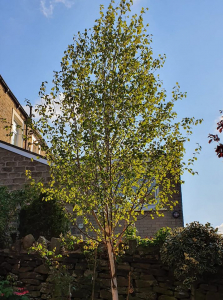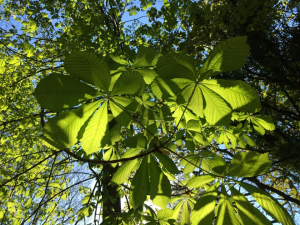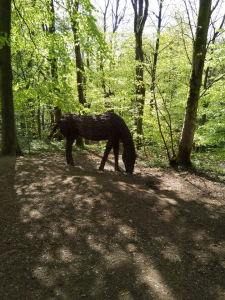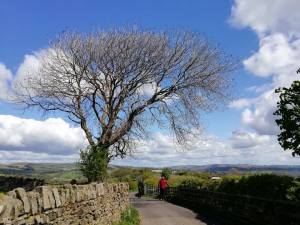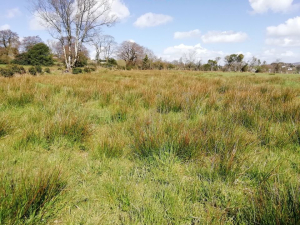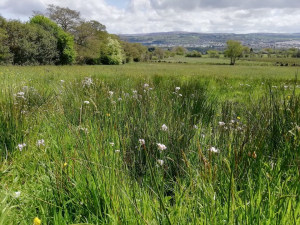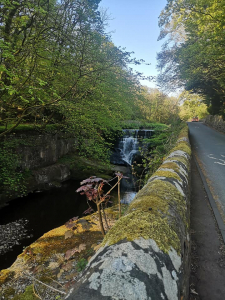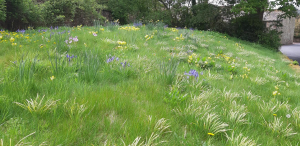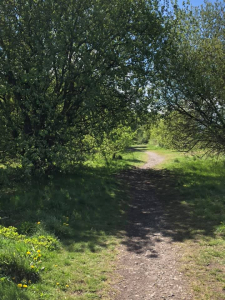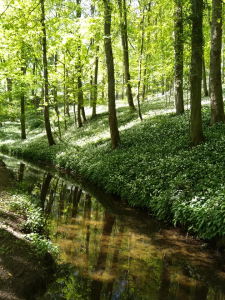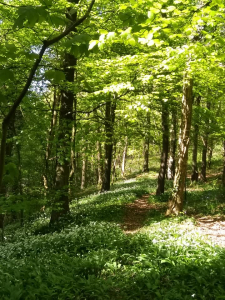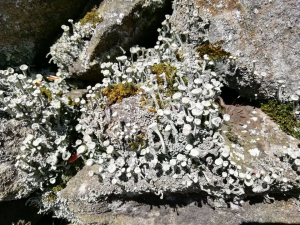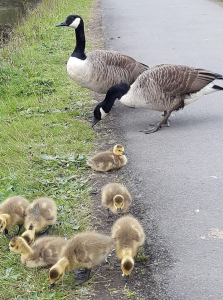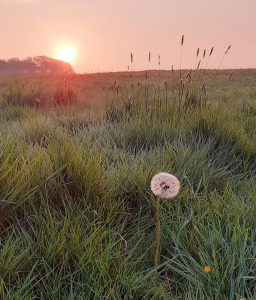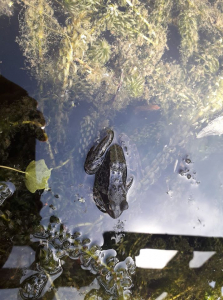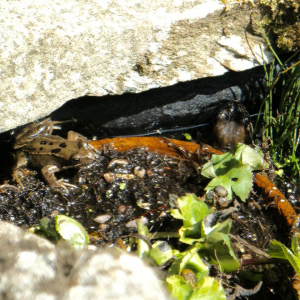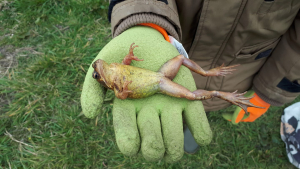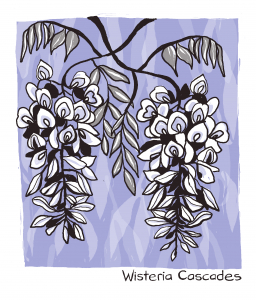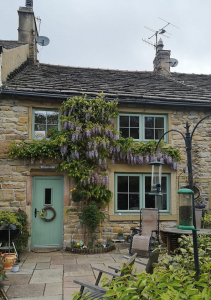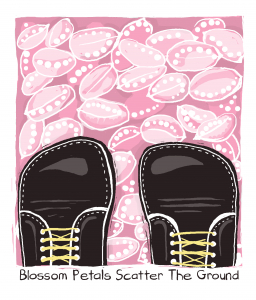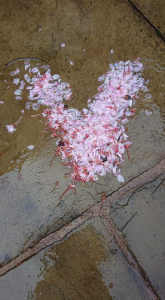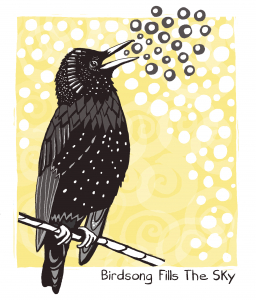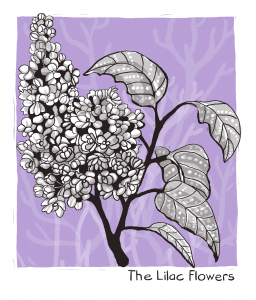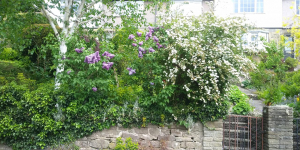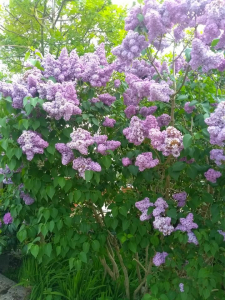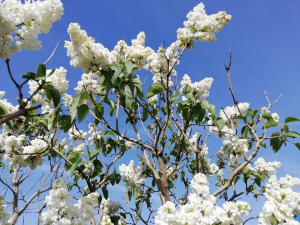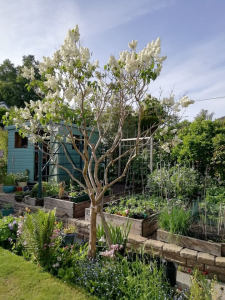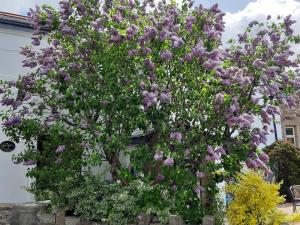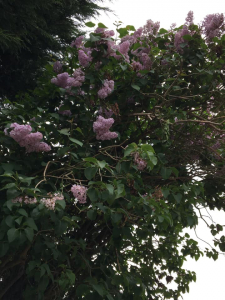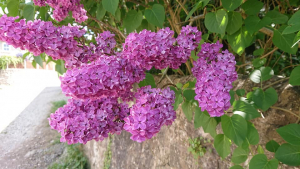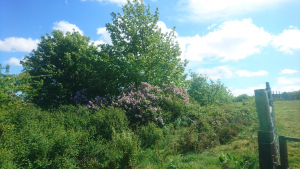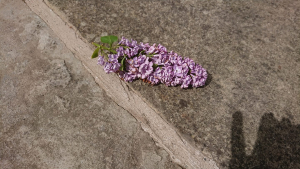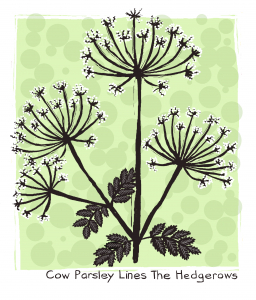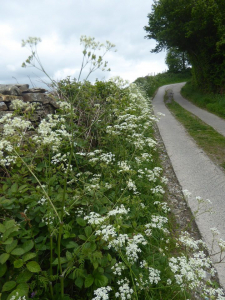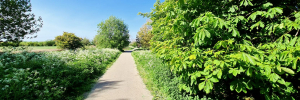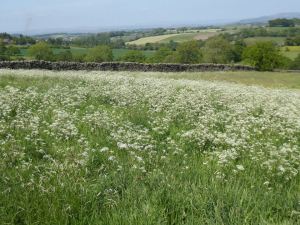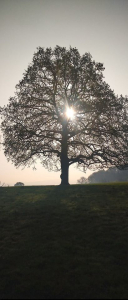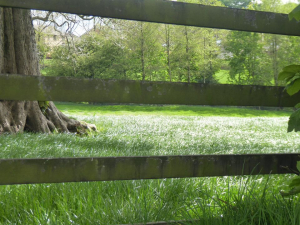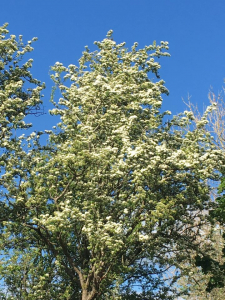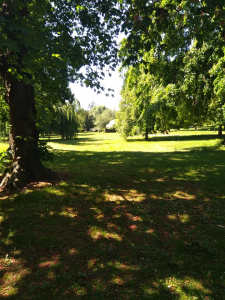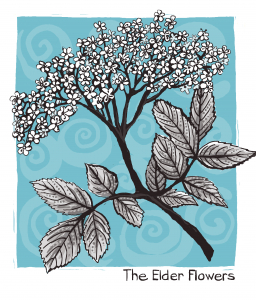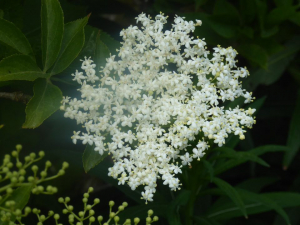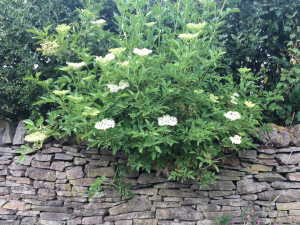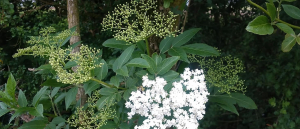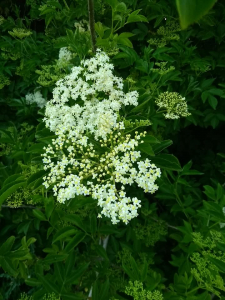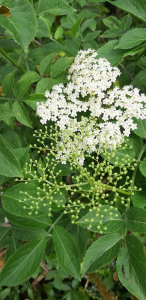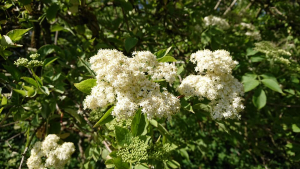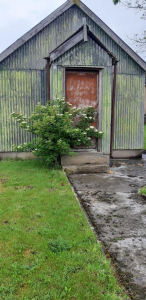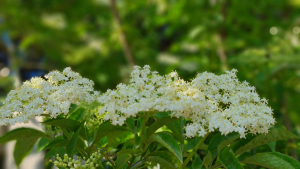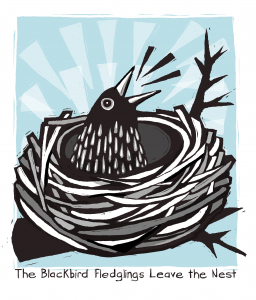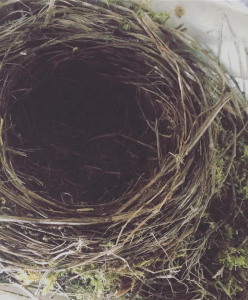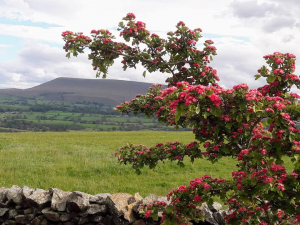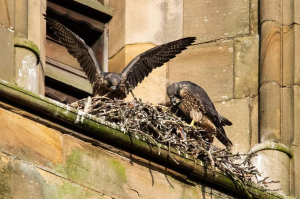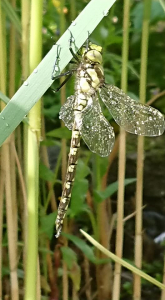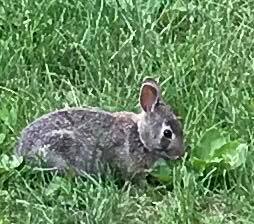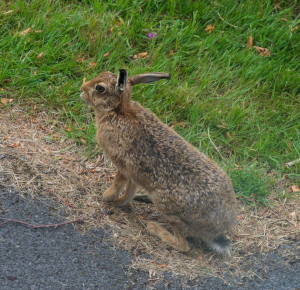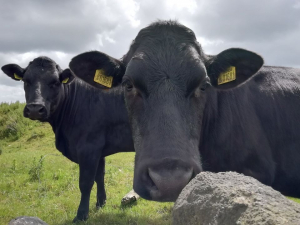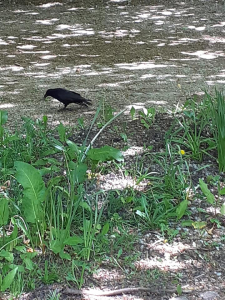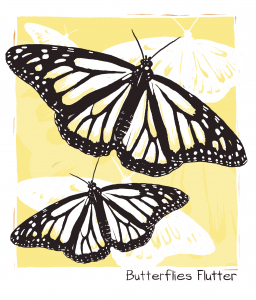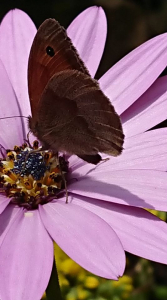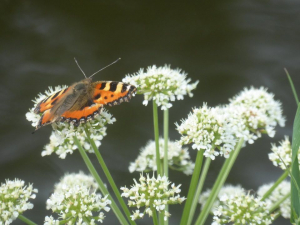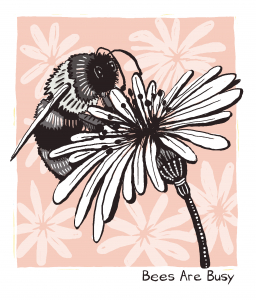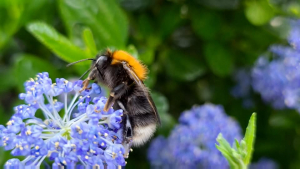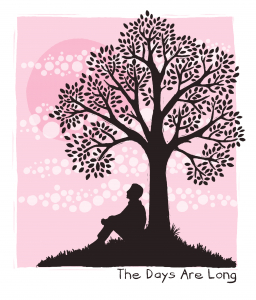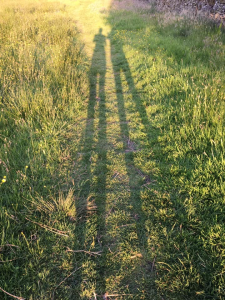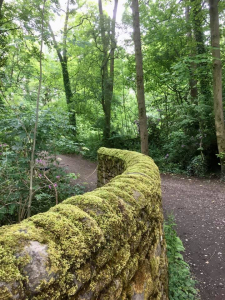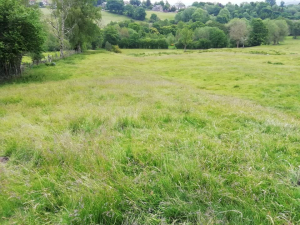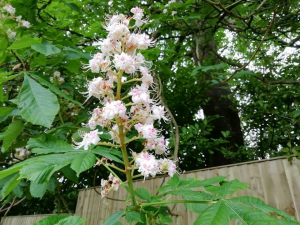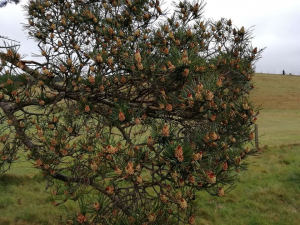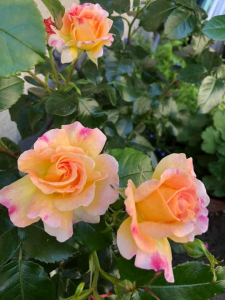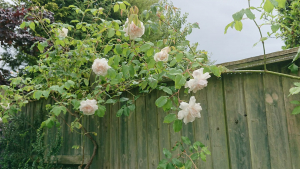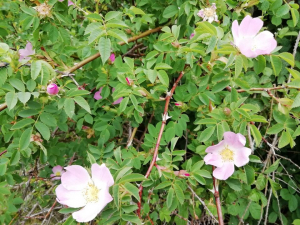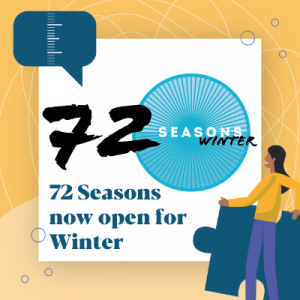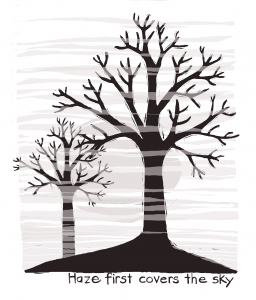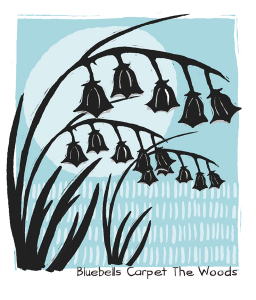Summer in the 72 Seasons
Summer!
It wasn’t the sunniest and warmest of Summers in the main. Maybe all the sunshine was allocated to Spring? I think if I’m honest this season struggled a bit more than the others. Lots of people did manage to go on holidays, including me, and staff shortages meant an extremely busy Summer when not away. One seeker explained “I am enjoying this project but feel I’ve contributed less lately due to family commitments during the school holidays.” Maybe everyone spent more time in nature and less time sharing pictures, or our seasons maybe didn’t pop quite as much, but luckily our intrepid seasonal seekers adapted well and sought out quite a lot of nature to share with others.
I think it shows how resilient the project and the concept is. A year is a long time to run an activity with people, and there has to be peaks and troughs within that year. Also, as an experimental concept, running for the first time, it’s always tricky to predict how much people will ‘get it’ especially since this project is a little deliberately vague so people can make it what they want it to be. I only hoped that some people would stay with us for the whole year, I did expect quite a lot of people to drop out. Spoiler alert! They didn’t, well not many did!
Let’s take a look at what happened.
Season; 2 – 6 July: Trees Create Dappled Sunshine
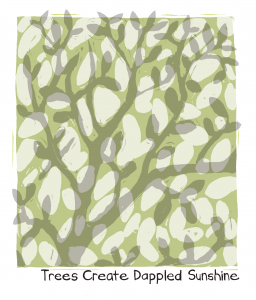
I have a little confession to make here, this is what I think of as ‘my’ season. It’s my birthday in this time and when I was writing all the seasons and planning it out, I did decide to create something that is special for me. That special thing is when trees create dappled sunshine. I love to walk through a woodland or through just a couple of trees where beams of sunshine fall down through the canopy, and one footstep is lit up and glittery and the next in shadow. I think it’s one of the most beautiful things in the world, and a little bit of everyday magic. Luckily, our seekers agreed with me and this season made the final cut.
We keep a season if more than 50% of our seekers agree with it. They can agree in two ways; ‘yes I noticed this’ or ‘yes I think this is right but did not notice it myself’ and we gave that option to account for busy lives, or trips away or just times when people had other things going on.
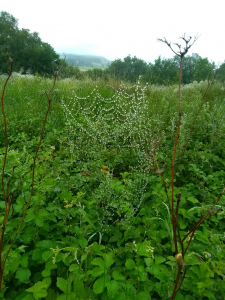
I do love the way our seekers notice wonderful little moments and then share it. On the 2 July one person captured a spiderweb which has captured many raindrops. One person said “These are like beautiful jewels” and another “Amazing that it can hold all that water and possibly even survived the heavy rain we’ve had to catch that many droplets – incredible!”.
Spider web fact- Spider silk is stronger by weight than steel. Spider silk is lighter than cotton and up to 1,000 times thinner than human hair, yet it’s also incredibly strong for such a wispy material.
In the emails we sent to people explaining the new seasons to look out for we would share snippets of information and some knowledge about each season, to help encourage people to keep learning, which is one of the five ways to wellbeing. The five ways to wellbeing are a core part of this project, the principles underline the whole piece of work. It’s that the five ways – connect, take notice, keep learning, be active and give back, are proven ways to help us feel better. That’s quite important during a pandemic, when our wellbeing is much more fragile.
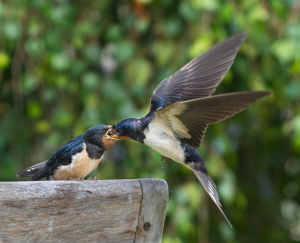
This photograph of birds feeding was taken on 5 July by one of our seekers. Isn’t that an amazing photograph? Really in the moment, perfectly timed, and crisp focus too.
Our seekers were out in force that Sunday, also spotting…
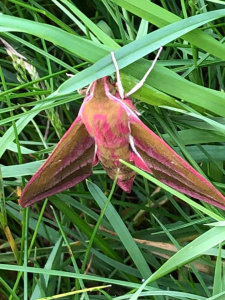
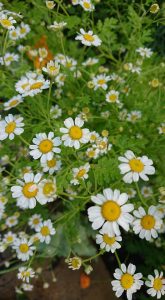
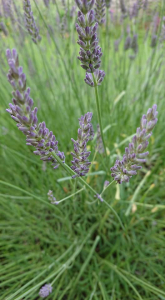
An elephant hawk moth, daisies and a field of lavender.
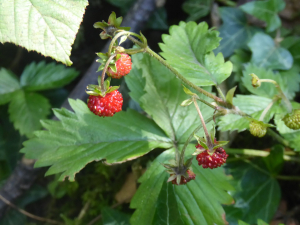
One day later, 6 July a seeker shared a photograph of wild strawberries. “I’ve been picking and eating wild raspberries on my walk” one seeker mentioned and another “Wild strawberries are tiny with a surprisingly good flavour.”
Season; 7 – 11 July: Hot Winds Blow
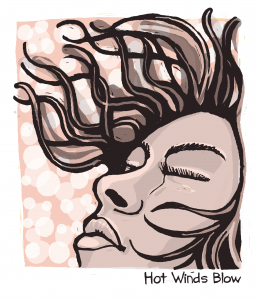
It’s January as I write this, and it’s cold and windy. But I can think back to when the wind is hot, I can remember the feel of that on my skin. I can remember the warmth. It’s a hard season to capture in a photograph, and most of our seekers seemed to be looking down. Maybe they were avoiding those hot winds?
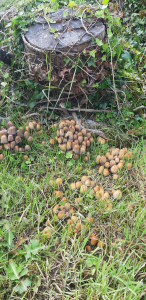
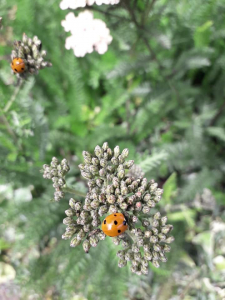
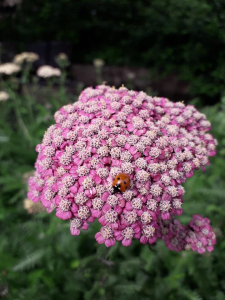
Mushrooms taken on the 7 July, and both ladybirds also spotted (do you like what I did there?) on the 7 July.
One place where it’s always windy, hot or not, is our anchor, Pendle Hill. All our seekers live around it, within half an hour or so. This project is funded by the Pendle Hill Landscape Partnership.
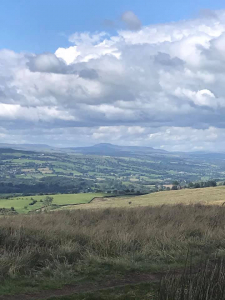
This image of Pendle Hill was taken on the 11 July. We did keep this season.
Season; 12 – 16 July: The Raspberries Turn Red
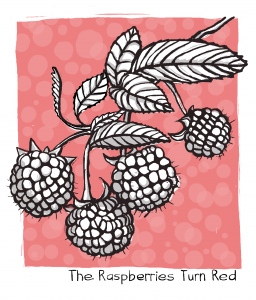
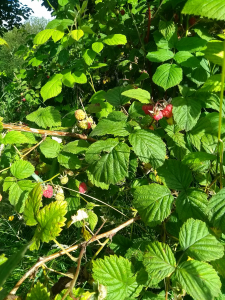
Some raspberries, red ones, at Quarry Hill in Nelson, taken on the 12 July. It looks like a gloriously sunny day on that photograph.
Yet look at this, taken just two days later. The Great British weather in Summer is a moveable feast!
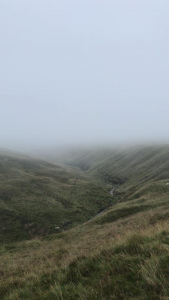
Fog on the hills taken on 14 July.
Then back to sunshine again. Impossible to predict. I know, I tried! This time our seekers found flowers
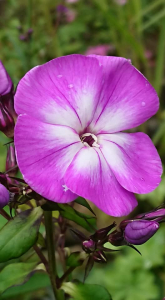
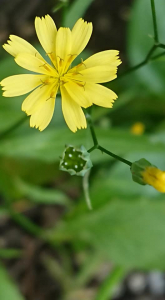
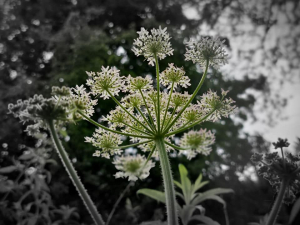
Pink flower taken on the 15 July, same as the yellow flower, and the photograph of the white flower was taken on the 12 July. I don’t know the names of all of these flowers, except for Cow Parsley on the right.
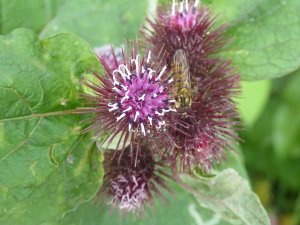
Taken the day before our new season on 16 July, one seeker was cleverly anticipating the next season.
Season; 17 – 23 July: Lavender Feeds the Bees
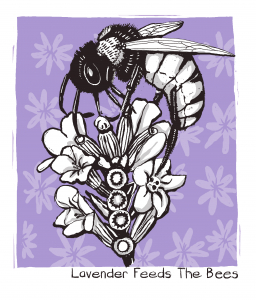
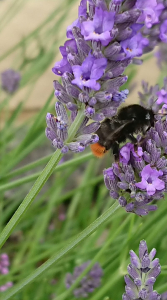
Great timing as this was taken on the 17 July. I also love how this seems to match Cath’s drawing perfectly. The colour, shape, stance, everything is just spot on. Sometimes, there is a season like this where everything works- the timing, the weather, the noticing, all in perfect alignment and this was one of those seasons. Lots of people saw lavender with bees on in real life and there was 100% agreement this season, but it was quite tricky to photograph. That doesn’t matter though, its nice to think of people watching the seasons in real life, and not always through a screen. Especially this year, where screen use is probably higher than it ever has been.
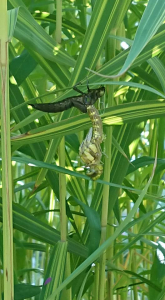
Amazing that one of our seekers managed to photograph this, which was taken on 19 July.
72 Seasons has been a really democratic place, where anyone could share knowledge and information, stories, and wonder. It has remained a really pure group on Facebook, which is drama free and all about nature in this area. Not everyone taking part in the project takes part in the Facebook aspect, its not necessary, but these blog posts do have a heavy Facebook influence. The amount of knowledge shared is wonderful. Here are just a couple of examples.
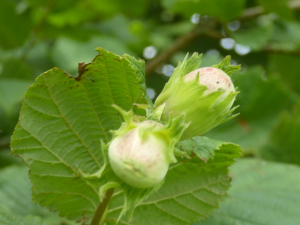
A hazelnut developing 19 July.
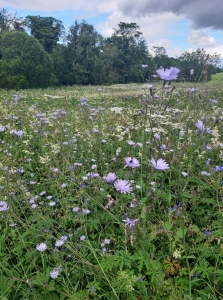
A Chicory Field on 21 July, identified via the hive-mind. “I wonder if it was planted/sown or if it has just taken over the field? you sometimes see it on roadside verges too” one seeker mused and another thought “I think chicory too”. Little snippets like this happened many, many times, and each time it helped the group to connect a little more. One seeker told us they were “Enjoying to growing feeling of being part of a community.” in Summer.
I originally planned the connect aspect of the project to be purely about connecting to the nature around you, and it evolved to be more. That’s exciting, when an idea starts to find it’s own path.
Season; 23 – 28 July: The Hollyhock Grows Tall
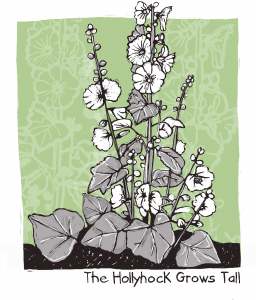
By Summer, our seekers were confidently going off-piste. Sharing what they noticed as they looked for the seasons but not always sharing the seasons!
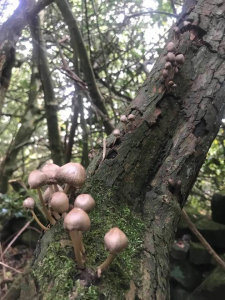
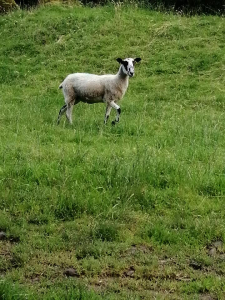
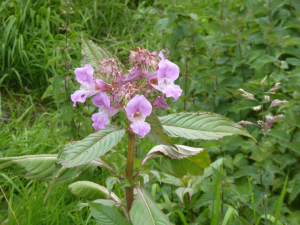
One seeker found a clump of mushrooms, and titled the picture ‘Bleeding Fairy Helmet’ thankfully, as I don’t know about you but my mushroom identification skills leave a lot to be desired. A newly sheered sheep made an appearance and this season the group had long discussions about invasive and dangerous plants like this Himalayan Balsam, spotted and photographed on the 24 July. I recognise the plant by its smell mostly, it’s a sickly sweet smell which immediately reminds me of walks in my childhood but I have no idea why.
The weather was also noticed, although sadly not much sunshine was found. That tricky Great British Summer again.
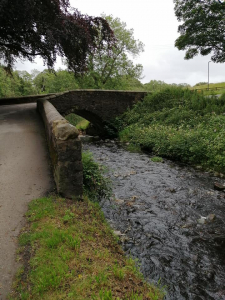
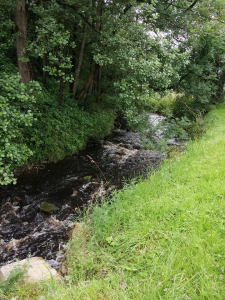
The 26 July saw our seekers drawn to water, with both of the above photographs taken then. The water level was high for summer, do you remember the weather? It was really mixed. “A very poor July weather wise so far” one seeker told us. Another said “July has just been so atypical this year! Up on the Bowland Fells we have had very little other than heavy cloud & rain, with some fierce winds.” and another explained “A rather wet July , lots of mist on Pendle Hill. Then a sudden break in the cloud gives you such amazing views. Has been cool in the evenings.”
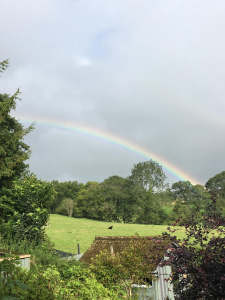
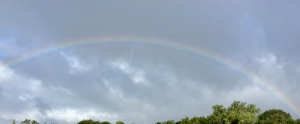
On the 28 July they found rainbows. Which kinda proves how mixed the weather was. 72 Seasons in one day? Not quite. One person did say “Perhaps we really do need 72 seasons – the weather is so changeable.”
Season; 29 July – 2 August: Damp Earth, Humid Heat

Another season which is a tricky one to photograph. While I mention that, how well has Cath Ford, our artist, done? She has represented concepts really well throughout. I’m sure there must be a few head scratching moments when I send her the titles, but I don’t see that in what comes back. It all feels beautiful, and right, and often seamless and timeless, like that image has always been a part of that season, and Cath revealed that to me.
Our seekers loved the images too “The illustrations were ‘spot on’ And illustrated the seasons well.” one seeker told us in Summer, “Love the images – they are really inspiring and draw me in.” continued another and “The illustrations were brilliant” and “Love the pictures of each season” and we could go on!
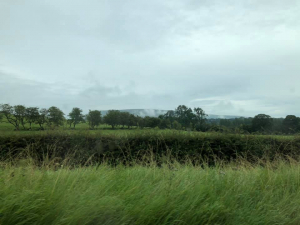
A cloudy Pendle Hill 30 July. There is a famous book called ‘Mist over Pendle” and it’s such an apt title. I often think of it, as I see Pendle peeking from the mist.
As we left July and entered August, our seekers kept taking notice. Flowers were spotted.
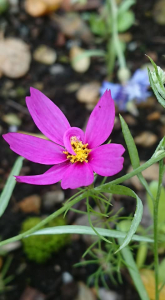
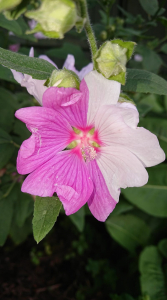
Both of the above were taken on 1 August. The ‘Mallow Half and Half Petals’ attracted some attention, as the group tried to work out what caused the unusual colouring? “virus infection and complicated genetic effects ( epigenetics) are other possibilities. Whatever the reason it’s interesting and Beautiful.” was the ultimate consensus.
And I dug up some potatoes I’d grown and took a moment to show off!
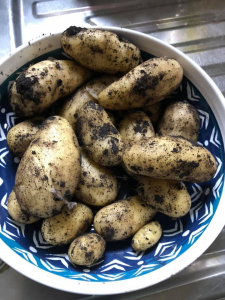
Oh these potatoes, they look so innocent, but in reality… I have a four year old son, and during lockdown we planted these potatoes together. We checked on them most days, and even gave them a bit of watering. I taught him how to earth up the potatoes. We talked about them and about eating them for four months. Then, when they were cooked, said 4 year old refused to even taste one. Aaargh, Kids!!
Season; 3 – 7 August: The Breeze is Hiding
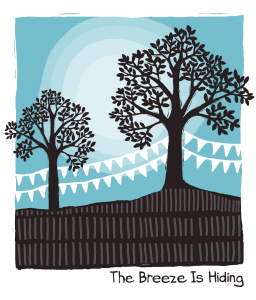
I mentioned that we keep the seasons which get more than 50% agreement. Some are only just over the 50% but a decision needs to be fairly applied. This was one of those slightly more controversial seasons. One seeker told us “The weather has been different each day recently from calm and still to stormy.” and another was blunter, “The breeze was most definitely blowing, not hiding!” which did make me laugh at the time!
Season; 8 – 12 August: Blackberries Stain Fingertips
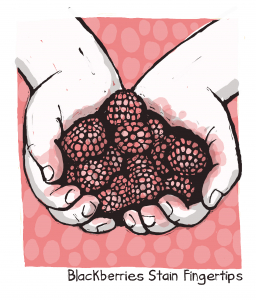
This is a new season and replaced ‘a cool wind blows’ as less than 50% of our seekers agreed. One person explained there was a “Warm wind blowing.” and another said “During this period we had just about the only day so far in 2020 when there was NO noticeable wind or breeze at all!” which again, I loved. I do really like the honesty of our seekers, and I sometimes think they like the seasons I get completely wrong more than the ones I get right! The process by the way, when we have a gap, is that I read all the comments from this season and have a look at what people were sharing at that time. There is usually one thing that is mentioned most. This season was Blackberries. I wanted a description linked to an action, as it is surrounded by two more passive, watching type seasons. I actually really love the description I came up with in the end. Is that too big headed?
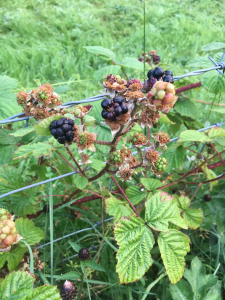
This image of Blackberries was taken on 8 August.
While talking about the 8 August, our seekers enjoyed chatting about the old aide memoir of cut the lavender back to 8 inches on the 8 August (8 month). We mostly agreed this maybe was more suitable for further south gardens. “Not cutting mine back……it is covered in bees and the flowers are not over yet” one seeker explained.
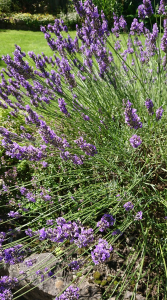
Here is a lovely picture of Lavender in Sunshine taken on 8 August, just to confirm the point!
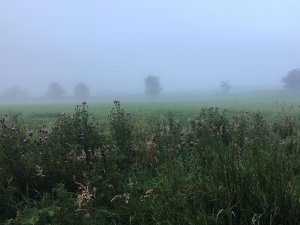
Ahh. The Great British Summer is back. ‘Foggy View’ taken on the 8 August. Lots of different weather in different parts of our area on 8 August.
Wildlife spotting continued;
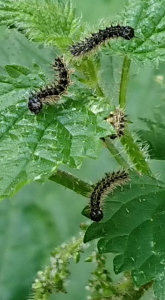
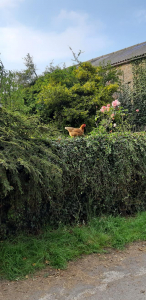
Caterpillars spotted on the 11 August and Chicken on a wall spotted on the 13 August. Quite intrigued about the chicken! I don’t remember noticing this at the time. Do you think there are some hidden steps, or is the garden much higher? Is there an intrepid chicken run type flying contraption just out of shot? It feels like there is a story here. I would have asked more questions had I spotted that one!
Season; 13 – 17 August: Morning Sunshine Lights the Grass
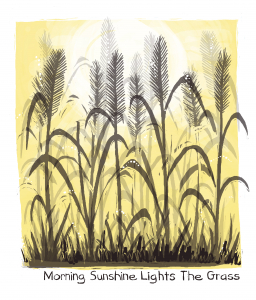
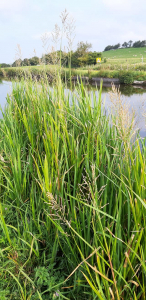
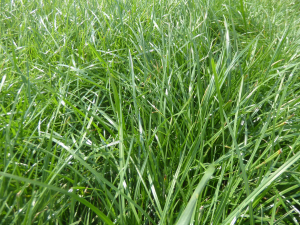
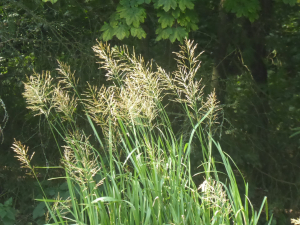
All of these images were taken on the 13 August, the day the new season began. The third one is such a close match to Cath’s drawing.
It’s lovely when people remember the previous seasons.
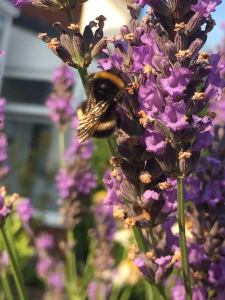
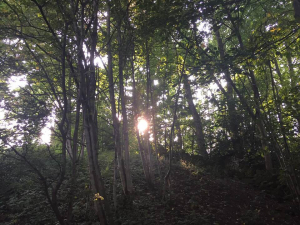
Feeding bees, and dappled sunshine spotted in the forest, both on the 15 August.
Sometimes it’s just what catches peoples eyes, and this bright red poppy is certainly eye catching!
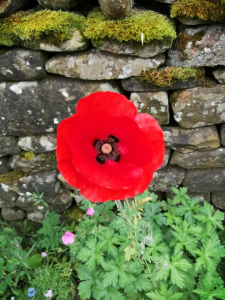
Poppy photographed on 16 August.
Season; 18 – 22 August: The Apples are Ready to Harvest
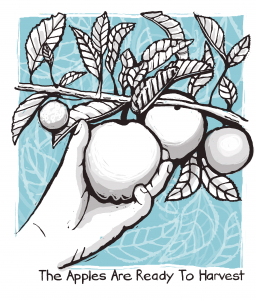
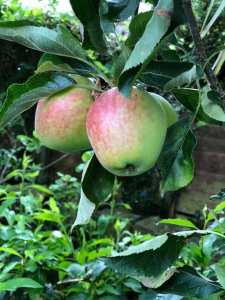
Taken on the 19 August I think this photograph works particularly well with Cath’s drawing. I feel like I can put my hand into the image, and pick an apple. Do you know how to tell if an apple is right? You hold it in your hand and twist ever so gently and if it is ready, it comes away easily. If you have to yank it away from the tree, it’s not ripe.
Season; 23 – 27 August: The Sunflower Stretches High
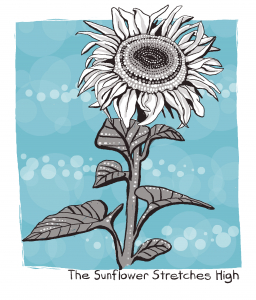
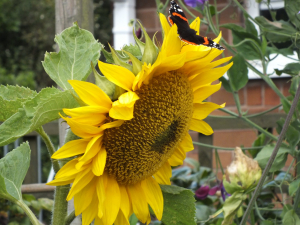
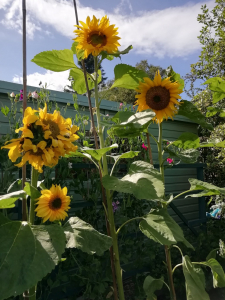
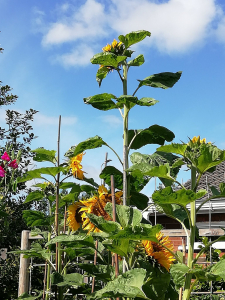
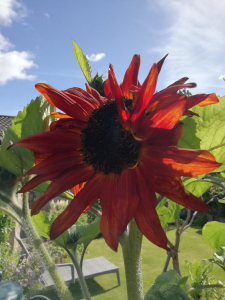
All of the above were taken on 23 August, the sunflowers were stretching high against lovely sunny blue skies.
Season; 28 August – 1 September: Earth and Sky Begin to Cool
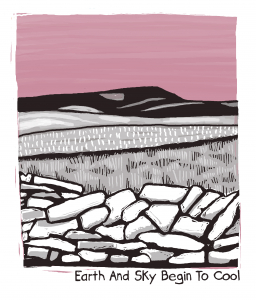
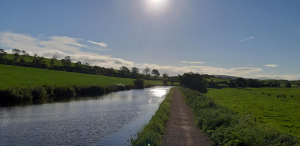
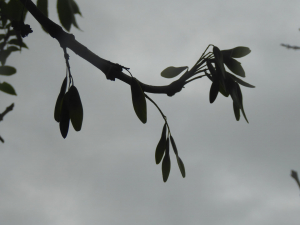
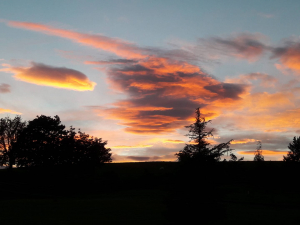
Another tricky image. I’m starting to think I put all the difficult ones together! People did share images which evoked feelings though. It’s a season of change, and you can see warmth and coolness here and transitions too, with a sunny canal shot from the 29 August, a tree leaves image which feels colder also from the 29 August and a ‘Spectacular Sunset’ taken on 30 August.
Season; 2 – 7 September: The Orange Leaves Start to Show
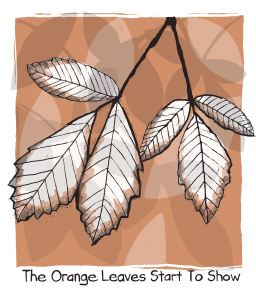
There is a poignant feel to this season, as the leaves start to change. There is also a quote, unattributed, and often misquoted (possibly by me) that the trees are about to show us “how beautiful it is to let things go”. Do you feel this? I’m not sure I do yet. But I do know that 72 seasons has made me enjoy winter and autumn and to look forward to every change, not to miss the days before. Spring and Summer will always have my heart, but I’ve learned to see the act of noticing change as the important part.
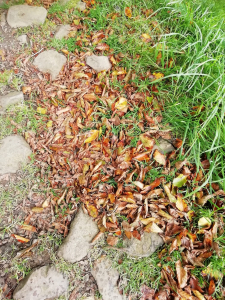
These leaves were spotted on 5 September. Don’t forget this is a taste of Autumn to come, not full autumn yet, as this next image shows. Tomatoes ripening in the sunshine. I can almost smell the warmth of that spot nestled by the dry stone wall.
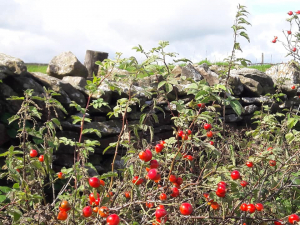
Tomatoes growing in a photograph taken on 6 September.
Season; 9 – 12 September: Spider Webs Glisten
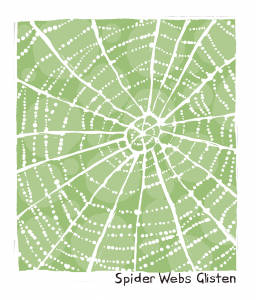
This was another season which was better in real life. Many people spotted the webs and this season received 97% agreement overall. However, the wispy-thin-ethereal-ness of spider webs are not so easy to capture on a photograph. Our seekers did manage though, just a little later. Practice makes perfect possibly?
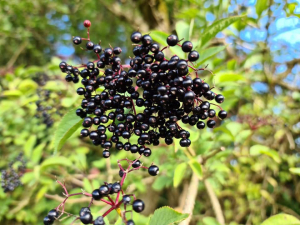
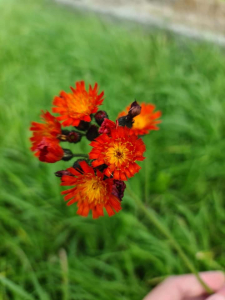
Elderberries from 12 September and Fox and Cub, a wildflower from 12 September
The group carried on connecting this season in other ways. There was a lively discussion around Elderberries. One person asked “Haven’t you got to be careful about elderberry cordial? I’ve seen something somewhere about there being something unpleasant in it which can be a problem when you don’t know how much is in the berries themselves.” and another, answered “Wikipedia link and others say that the plant contains compounds that generate cyanide. Various reports of poisoning, also seems to be little evidence of health benefits.” Although, confession time again, I’ve made elderberry cordial every autumn for three or four years now and I am convinced it helps me catch less colds. That could well be a placebo effect!
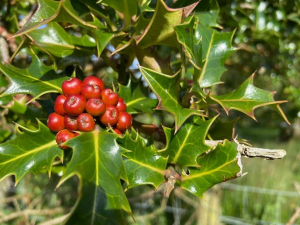
Also on the 12 September, this photograph of Holly Berries.
Some of our seekers really do discuss timing and the changes in nature, almost having a sense of the pattern of the world. One person noticed that here saying “amazing that the holly berries are already red.” and another explaining “They do seem to be reddening quite early. I also spotted some less “ripe” berries too.”
Season; 13 – 17 September: Tree’s Drop their First Leaves
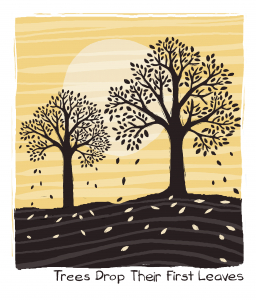
90% of people agreed with this season, but few photographs were shared. Maybe everyone was busy with back to school and work routines and there wasn’t time to go and explore, just to notice?
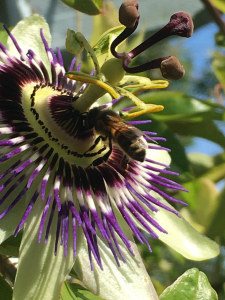
Great photograph of a Honeybee in Passion Flower was shared on the 14 September. One of our seekers explained “Pleased to see this honey bee working the passionflower in my garden. She was there for ages. Hoping she passes on the message. They haven’t got long now before they have to hunker down in preparation for winter.” One seeker agreed, “it’s a stunning flower very exotic looking.” Another replied “Our garden has been so busy with bees and coloured butterflies today. So good to see . Didn’t manage to get a pic.”
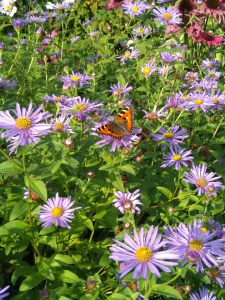
Butterfly photograph taken on 15 September.
And another seeker captured a butterfly photograph for the other seeker who didn’t get one. Isn’t that a fine example of good sharing!
Spider webs had a surprisingly long season, with people spotting them and remembering them all the way through September.
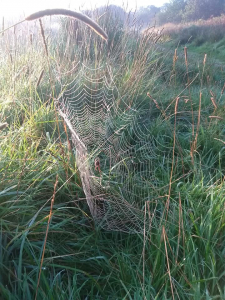
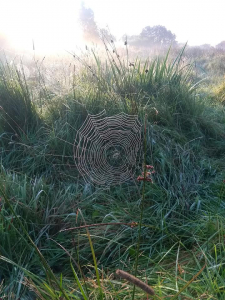
One seeker found these fantastically lit examples in a field on the 14 September. I really love the way the sunlight picks them out.
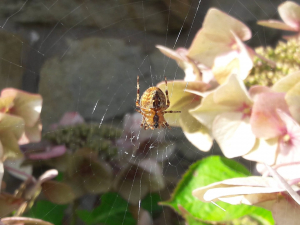
21 September a spider in its web is found!
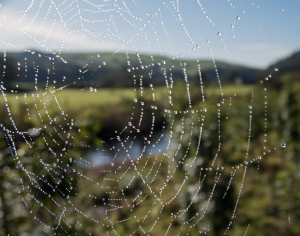
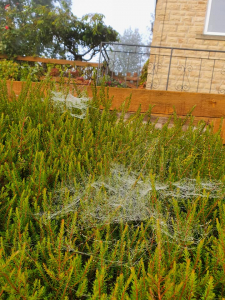
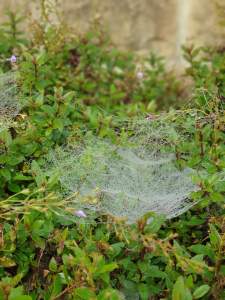
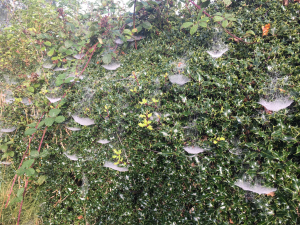
29 September was the best day for Spider webs, maybe an important date in the arachnid calendar? I think this is a really important set of photographs as it shows you can look for nature and the seasons from the wildness of huge vistas or in your back garden or just walking along a street. That’s the most special part of it, it’s everywhere, and persistent, and beautiful, and, easy to miss.
Season; 18 – 22 September: The Swallows Leave
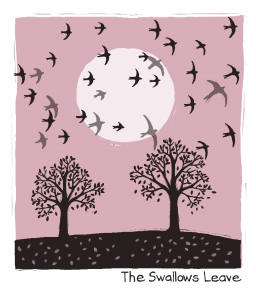
They did leave, one seeker said “Think ours have gone ![]() ” and another “I’ve not seen mine for quite a few days now” and one reported a friend from Whalley had confirmed this “the swallows have left
” and another “I’ve not seen mine for quite a few days now” and one reported a friend from Whalley had confirmed this “the swallows have left ![]() there must have been 150 on the wires last night. It’s so quiet without them.” Although this felt like a bit of a sad season, it’s important to try and get some balance. Without them leaving would we notice the return as much? And, think of that, 150 gathered on the wires. Like a huge party!
there must have been 150 on the wires last night. It’s so quiet without them.” Although this felt like a bit of a sad season, it’s important to try and get some balance. Without them leaving would we notice the return as much? And, think of that, 150 gathered on the wires. Like a huge party!
Season; 23 – 27 September: Thunder Lowers it’s Voice
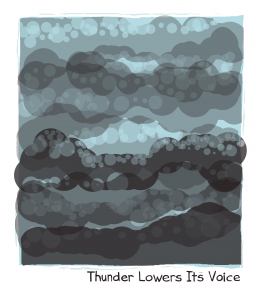
One of my favourite bits about this season was how our group all support each other – including me, and Cath Ford too. Cath posted on this one “Right, anyone got any thoughts about how I can draw thunder? These sound-based seasons are a challenge.” And we all rallied round, and talked mostly about lightning! Being no help whatsoever as it turned out!
What do you think of the final drawing? I spent a moment looking at it then, and it certainly raised a feeling of being ‘unsettled’. I love it when art provokes a feeling.
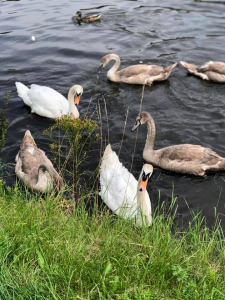
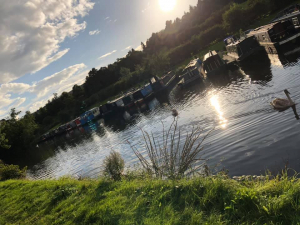
Both swan photographs were taken on 26 September. As an aside this season we had a discussion around swans. One seeker explained “The swans on the canal near me had four babies grow all the way up this year. Every time I walked down there it always made me smile to see they still had four. I have been taking pictures of them all year and they have genuinely turned into my lockdown pals!” and another “The Skipton Canal Basin swans have managed 11 cygnets this year. All thriving”
There are no seasons about Swans, as they can’t be easily spotted in everyday life. Obviously that’s different if you live near a canal, but making this project accessible to everyone is a really important part of it.
Season; 28 September – 2 October: Black Elderberries Dance in the Wind
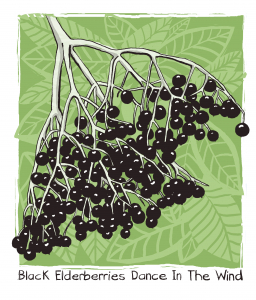
This was our last season of the quarter of the year that mostly relates to Summer. Our 72 seasons don’t easily match the established four, they are much more subtle and ever-changing.
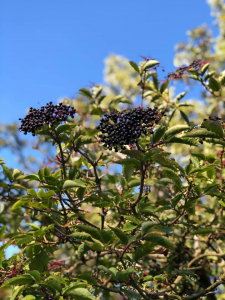
This image of elderberries was taken on 28 September. Another seeker did capture a fantastic video of them dancing in the wind, but I can’t seem to share a video from a closed Facebook group.
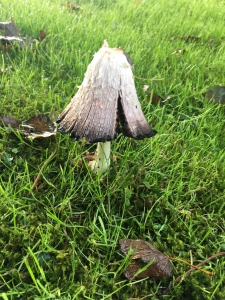
29 September (Spider Web Spotting Day) was also time to spot a Poisonous Mushroom.
One seeker explained “May be beautiful – but highly poisonous!!!” and another “Oh dear! From my childhood (and I’m very old!) my parents (who were experts (???) ) told ne not to touch them and if I did and licked my fingers I’d get a very upset stomach. My fungus book (with perhaps 1,000 varieties to choose from) indicates that its a Shaggy Ink Cap (or Lawyers Wig) which seems reasonable. Of course the fact that i’m still here (and do pick and eat wild mushrooms) indicates that they must have got something right!”
I think that’s another important point. When we first started discussing this project, we used to talk about things like how we used to know nature better and modern life has made us a bit too far removed from it. I don’t think I talked about mushrooms with my oldest son? But because of this project, I know I have with my youngest. And, I’m so proud that we have managed to put a group together who have that knowledge and can share it, or learn it.
Autumn next. I shall be writing up that adventure shortly!
Please note all photographs have been image described in their captions, to make sure this post is accessible to the widest possible audience.
If you have any questions or thoughts on this blog post, please send me an email at kirsty@theevaluator.co.uk – I’m afraid I had to turn comments of, as it was just getting filled with spam robot stuff which no-one wants to see.
